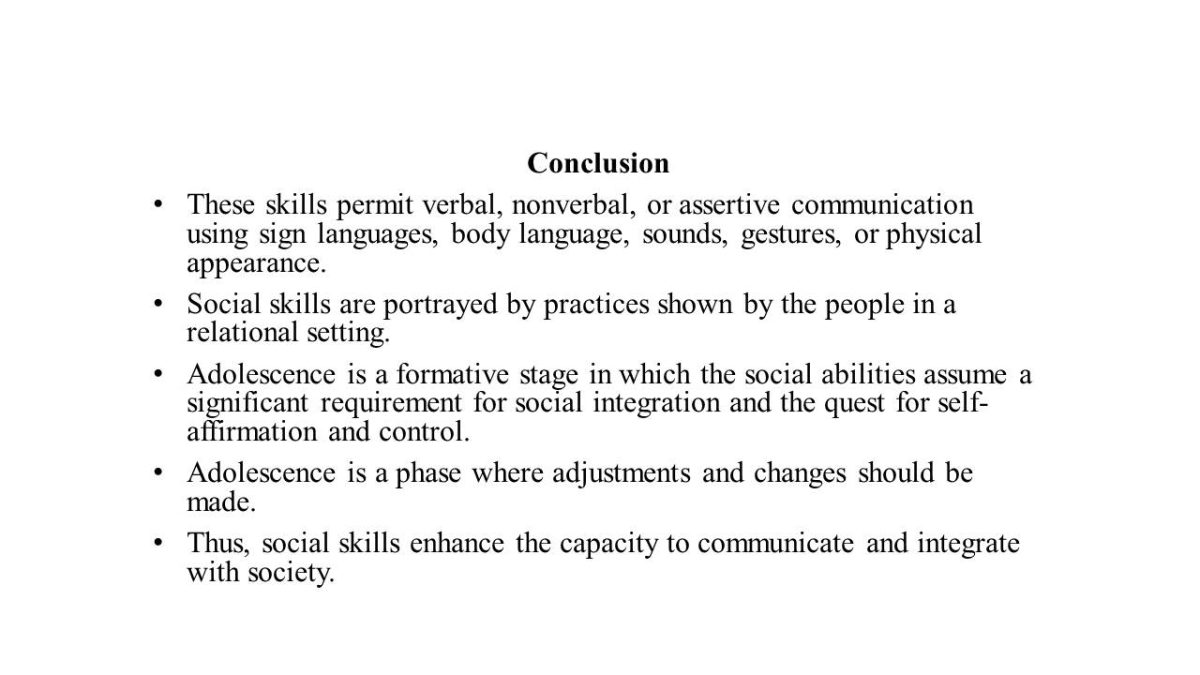Introduction
- Adolescents is a developmental phase.
- It creates communication issues for social integration.
- Social skills enhance and improve communication.
- Adolescents experience mental and social changes.
Adolescence is seen in many societies as a phase of advancement. Under this phase, limits are obscured, and classifications of the age group contrast across geographical regions. It is acknowledged that during this time, the youngsters are experiencing articulated physical, mental, and social changes, which present challenges novel to this phase, and the communication of these developmental changes and the determinants of wellbeing influence social integration.
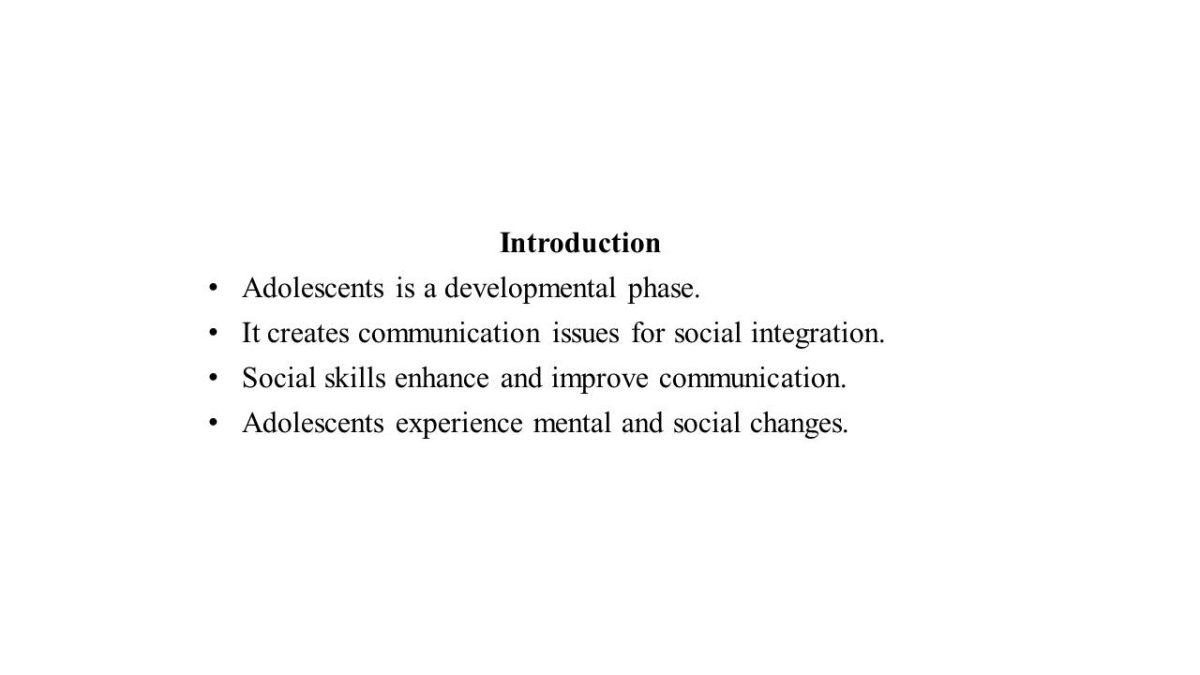
Thesis Statement
Social skills are endowments required for interaction and communication. These skills permit verbal, nonverbal, or assertive communication using sign languages, body language, sounds, gestures, or physical appearance. Social skills are portrayed by practices shown by the people in a relational setting in which they express sentiments, mentalities, feelings or rights satisfactorily for the circumstance, regarding similar conduct in others (Bell & Condren, 2016; Smith et al., 2020).
These abilities are infused via learning, and the exhibition level varies, relying on the formative stage, social and situational factors. Adolescence is a developmental stage in which the social abilities assume an essential requirement for social integration and the quest for self-affirmation and control (Bireda & Pillay, 2018). Thus, social skills enhance the capacity to communicate and integrate with society.
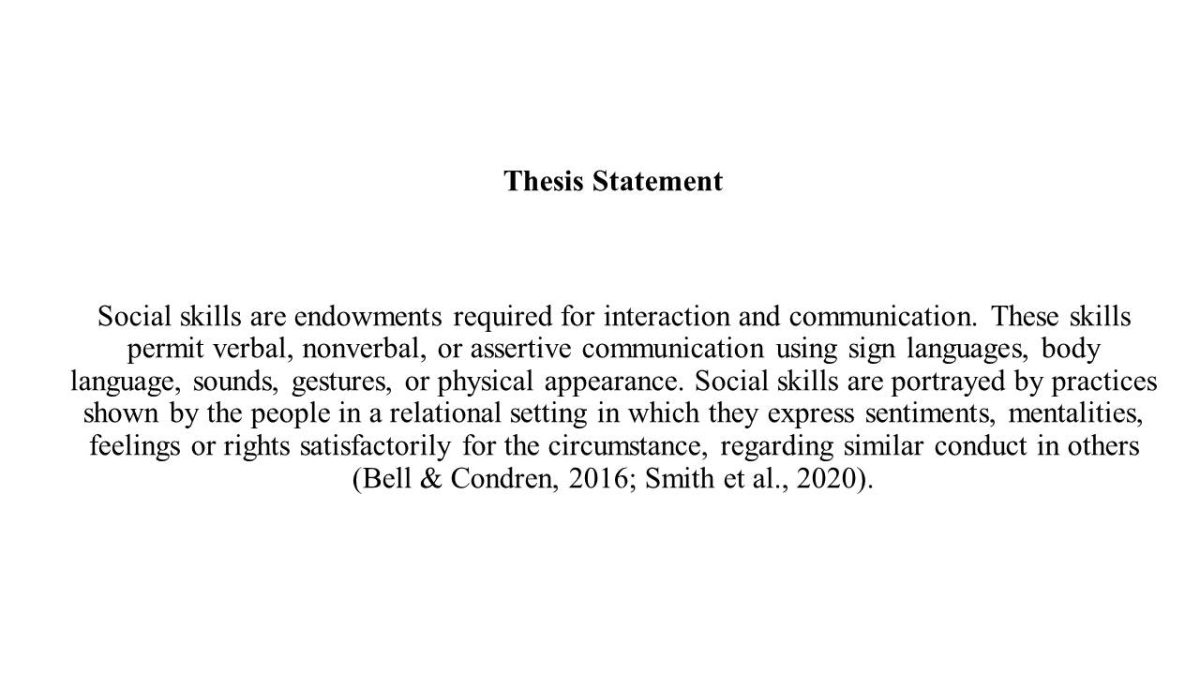
Types of Communication
Non-assertive communication
- Adolescents devalue their opinion;
- Cannot decide;
- Do not enforce their rights;
- Passive response;
- Accepts decisions.
Aggressive Communication
- Hostile and demanding;
- Do not consider people’s needs and opinion;
- Loud and overbearing;
- Communication is hostile;
- Lacks respect.
Assertive communication
- Polite and confident;
- Is not persuasive;
- Confident response;
- Make decisions;
- Needs are expressive;
- Communication is genuine.
Non-assertive communicators feel low about their values and need to be acknowledged, preferred, and consistently permit others to make decisions. According to Gareil 2000, non-assertive communication behaviors could be weak, and meek. Nonverbal relation skill relates to being non-self-assured and includes self-isolation, utilizing a calm tone, staying quiet, demonstrating apprehension with spasms, sweating, shaking, and outward appearances. Non-assertive communication skills could be useful when developed effectively. Attributes of non-assertive conduct include not communicating sentiments, needs, and thoughts, overlooking individual rights, and permitting others to encroach upon them.
Non-assertive communicators feel low about their values and need to be acknowledged, preferred, and consistently permit others to make decisions. Non-assertive communication behaviors could be weak, and meek. Nonverbal relation skill relates to being non-self-assured and includes self-isolation, utilizing a calm tone, staying quiet, demonstrating apprehension with spasms, sweating, shaking, and outward appearances. Non-assertive communication skills could be useful when developed effectively. Attributes of non-assertive conduct include not communicating sentiments, needs, and thoughts, overlooking individual rights, and permitting others to encroach upon them. Individuals often pick non-assertive conduct to keep away from undesirable circumstances, strain, strife, and showdown.
Assertive communicators attempt their best to be earnest, legit, prudent, open-minded, and secure. Assertive individuals are called sophisticated, ready, well-meaning, and develop.
Emphatic discussions tell others what your needs are. Nevertheless, it gives the choice to address issues individually. The attributes of assertive conduct include emotions, needs, thoughts, and manners that do not disregard people privileges. This type of communication is genuine, immediate, expressive, unconstrained, and self-upgrading. Assertive individuals accomplish objectives based on set benchmarks. Acting confidently fortifies positive sentiments, develops self-assurance, and enables open associations with others.
Aggressive communication skill is overbearing and repulsive. The social skill comes from feeling stuck in a dilemma where individuals disrespects one’s necessities and suppositions. Hostility will turn into the predominant method of communication when the speaker feels tuned in or unrivaled. While aggressive communication is important, it affects social communication and integration.
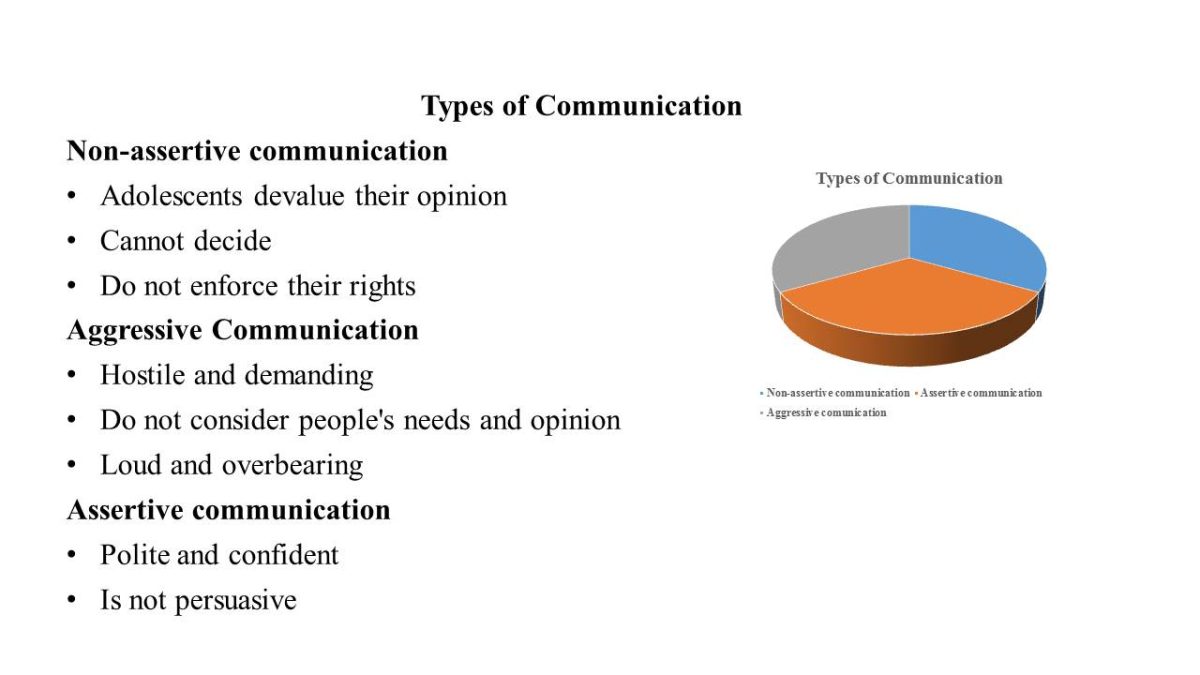
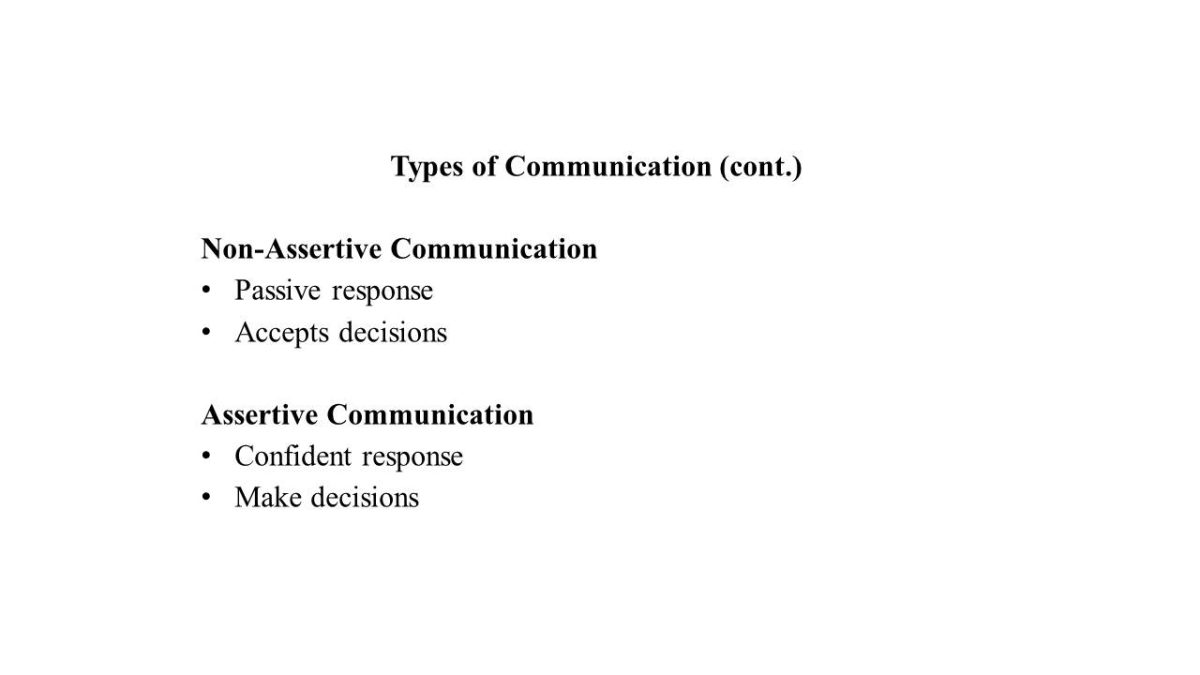

Strategies to Improve Adolescent’s Communication Skills
- Adopting the offense path;
- Repeat decisions;
- Fogging communication;
- Compromise communication.
Adopting the offense path
- Recognize a conflicting conversation;
- Organize support for the conflicting discussion;
- Provide opinions against the contradictory discussion;
- Maintain a stance on the discussion;
- Provide an informed offense without disrespecting other members.
Adolescence can apply this strategy to control a conversation. Under this technique, the individual would apply for the offending position rather than remain defensive throughout the conversation (Seif et al., 2019). The approach would enhance communicative skills, remove complex issues, and support social integration.
Compromise Communication
- Adolescents can prevent confrontation with a compromise technique.
- Partially accept the direction of the argument.
- Hold a supportive offense without disrespecting the other parties involved.
- Explain the compromised situation without confrontation.
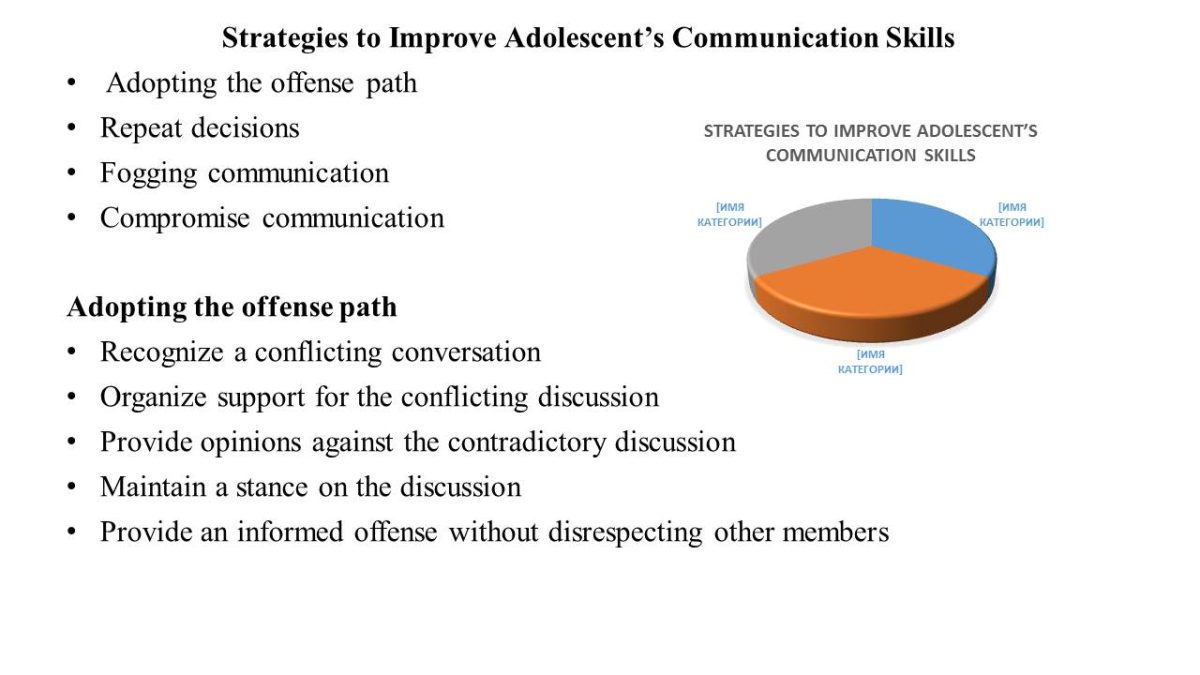
Repeat Decision Strategy
Adolescents can overcome assertive or overbearing conversations by applying the ‘repeat strategy’. Under the ‘repeat strategy’, the individual must rephrase his or her stand in distinct ways.
For example, the individual would decline an offer by saying ‘No.’
If the offer is sustained, the individuals can say, ‘no, thank you.’
If the person is pressured to accept the offer, the next response could be, I wish I could accept your offer, and I am very sorry.
Fogging Communication Strategy
This strategy improves the repeated technique. Under this technique, the individual provides reasons the ‘No’ answer cannot be compromised. Fogging communication is the best alternative to avoid confrontation with aggressive personalities.
The adolescent makes an excuse.
Avoids confrontation.

Case Scenario 1: Fogging Communication Strategy
Mark and John were returning from the gym when John brought out alcohol and cigarettes. John offers Mark cigarettes and a bottle of strong alcohol.
Response
Mark avoids saying no with another response.
Mark responds by saying he has counseling appointments with his mother.
Summary
Mark avoids confrontation with John by refereeing his choice of answer to his mother (higher authority).

Case Scenario 2: Compromise Strategy
A man and his female acquaintance were on a date when the man made a sexual advance. The man being persuasive wanted to have his way.
Response
The woman replied: “I like you and pray you do not hurt my feelings today; I would like a goodnight hug.”
Summary
She refused his offer.
She explains her stance on the issue.
She avoided a confrontation.
Social skill empowers adolescents, builds a collaborative attitude, encourages social integration, enhances healthy relationship, and mitigates peer pressure
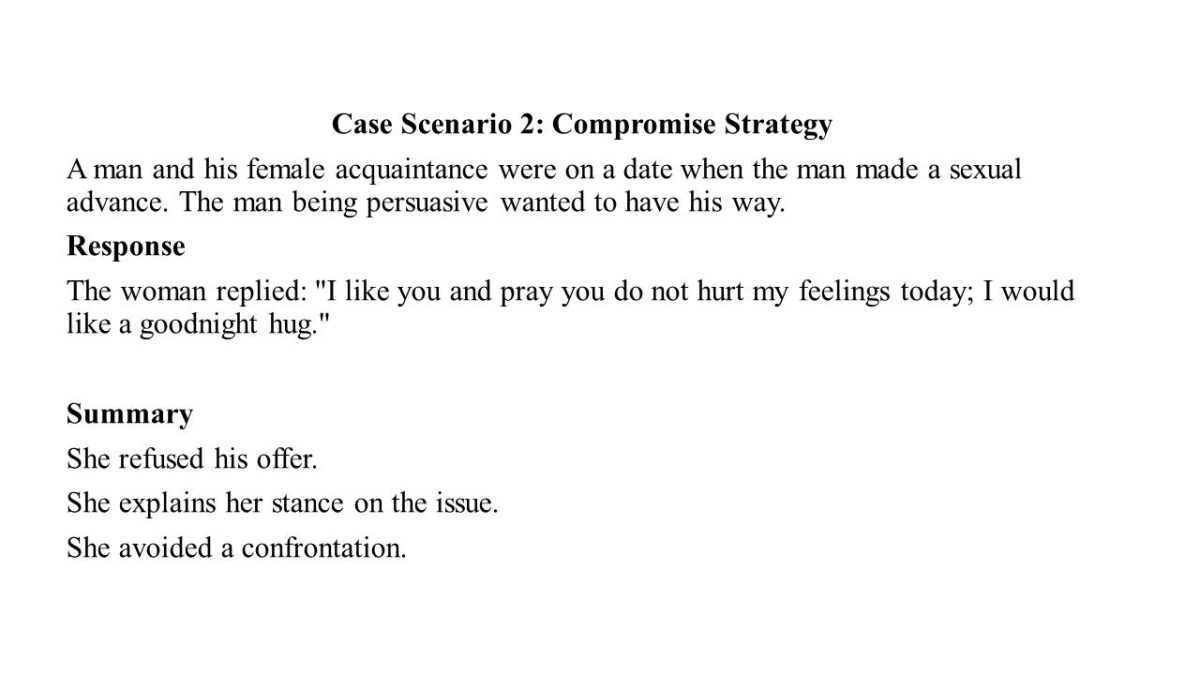
Case 3: Repeat Strategy
John and Mark argued about racist protests and black marginalization.
John was aggressive in his arguments while suppressing Mark’s views.
Response
Mark repeats his arguments in distinct ways while contributing to the conversation string.
Summary
Mark was respectful.
Mark avoided confrontation.
Mark sustained communication under his terms.
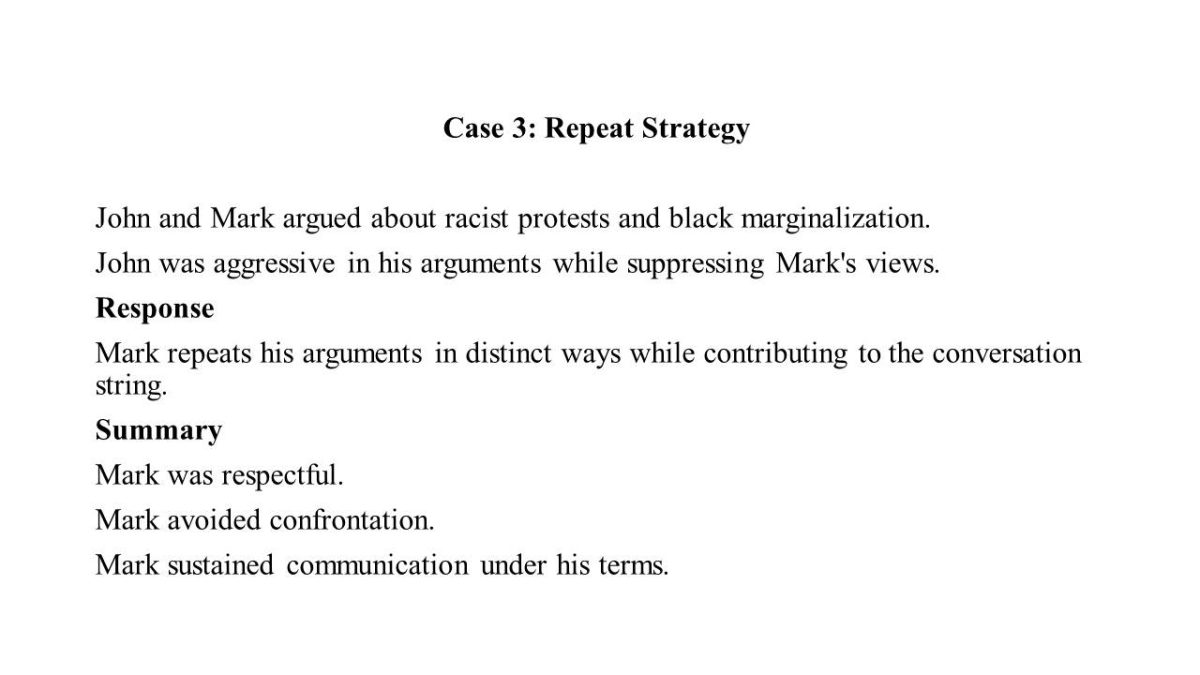
Summary
- Assertive communication training enhances self-esteem.
- Prevent delinquent lifestyle.
- Avoid depression and complex challenges.
- Minimize aggressive tendency in school settings.
- Social communication skill empowers adolescents to say ‘No.’
- Build a collaborative attitude.
- Encourages social integration.
- Enhances healthy relationship.
- Mitigate peer pressure and other negative social behaviors.
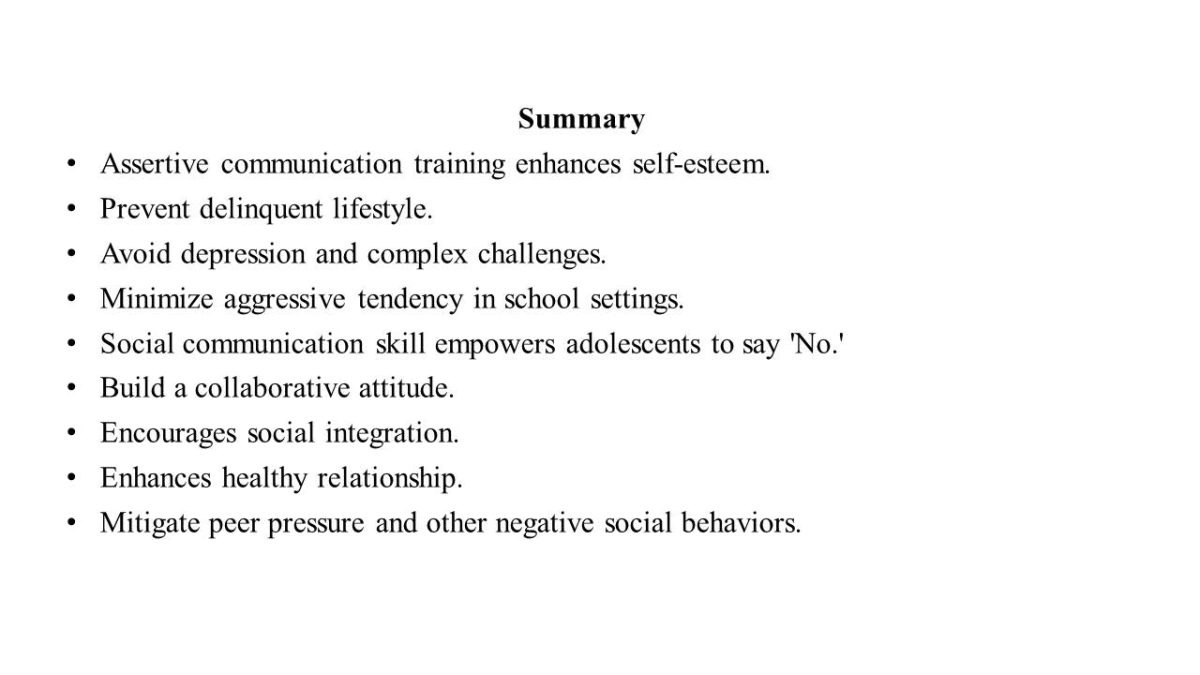
Conclusion
- These skills permit verbal, nonverbal, or assertive communication using sign languages, body language, sounds, gestures, or physical appearance.
- Social skills are portrayed by practices shown by the people in a relational setting.
- Adolescence is a formative stage in which the social abilities assume a significant requirement for social integration and the quest for self-affirmation and control.
- Adolescence is a phase where adjustments and changes should be made.
- Thus, social skills enhance the capacity to communicate and integrate with society.
Assertive communicators attempt their best to be earnest, legit, prudent, open-minded, and strong.
Aggressive people enforce personal privileges and overlook the rights of others.
Attributes of forceful conduct include emotions, needs, and thoughts to the detriment of others.
Communication training enhances self-esteem, prevents delinquent lifestyle, helps to avoid complex challenges and minimize aggressive tendencies.
